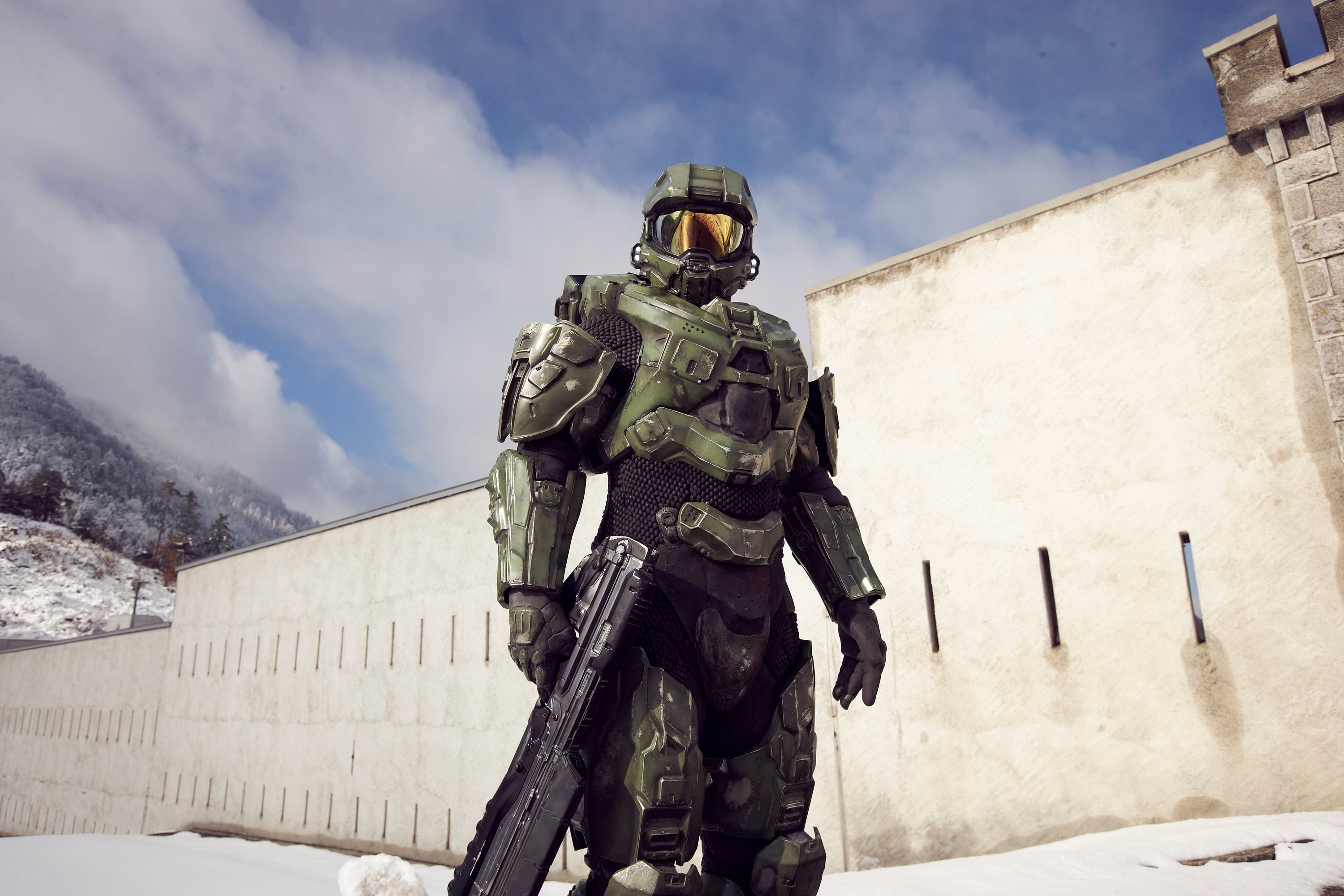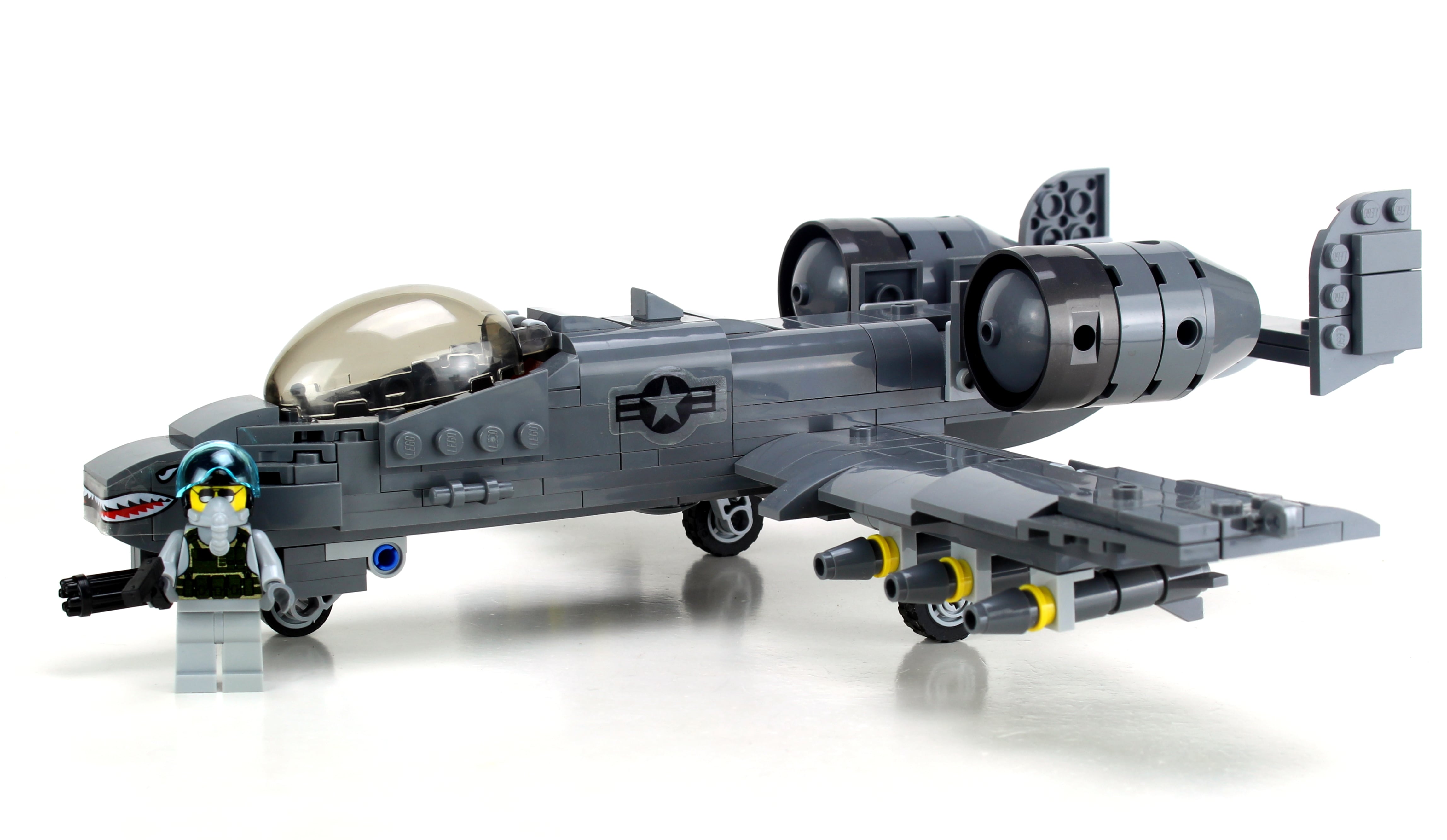Villers Bretonneux, Northeastern France. May 3, 1918. Two young British airmen emerge from a canvas tent and hurry across a makeshift airfield to a waiting airplane. They are RAF Second Lieutenant Alexander Brown and Corporal Bill Sainsbury. Brown, the pilot, gets in first, slipping effortlessly into the front cockpit. Sainsbury, the observer and aerial gunner, squeezes himself more carefully into the seat behind.
A mechanic grabs the front propeller and gives it a violent pull. Brown, eyes on the instrument panel, starts counting down. “Three…two…one…go!” He turns the starter handle and coaxes the engine to life. Having obtained his aviator’s certificate in 1913, just before the war, he is by now an experienced pilot. Sainsbury, who interprets the maps and operates a twin-barrel Lewis machine gun from the rear, is fresh out of the trenches, where he served with the First Battalion of the Wiltshire Regiment during the Battle of the Somme.
Their plane is a Bristol F.2B Fighter, one of the most agile and robust aircraft of World War I. (Pilots nicknamed the single-engine plane “the Biff.”) In a flurry of dust and noise, the biplane rolls shakily along the grassy runway before takeoff, heading east toward the German front line.
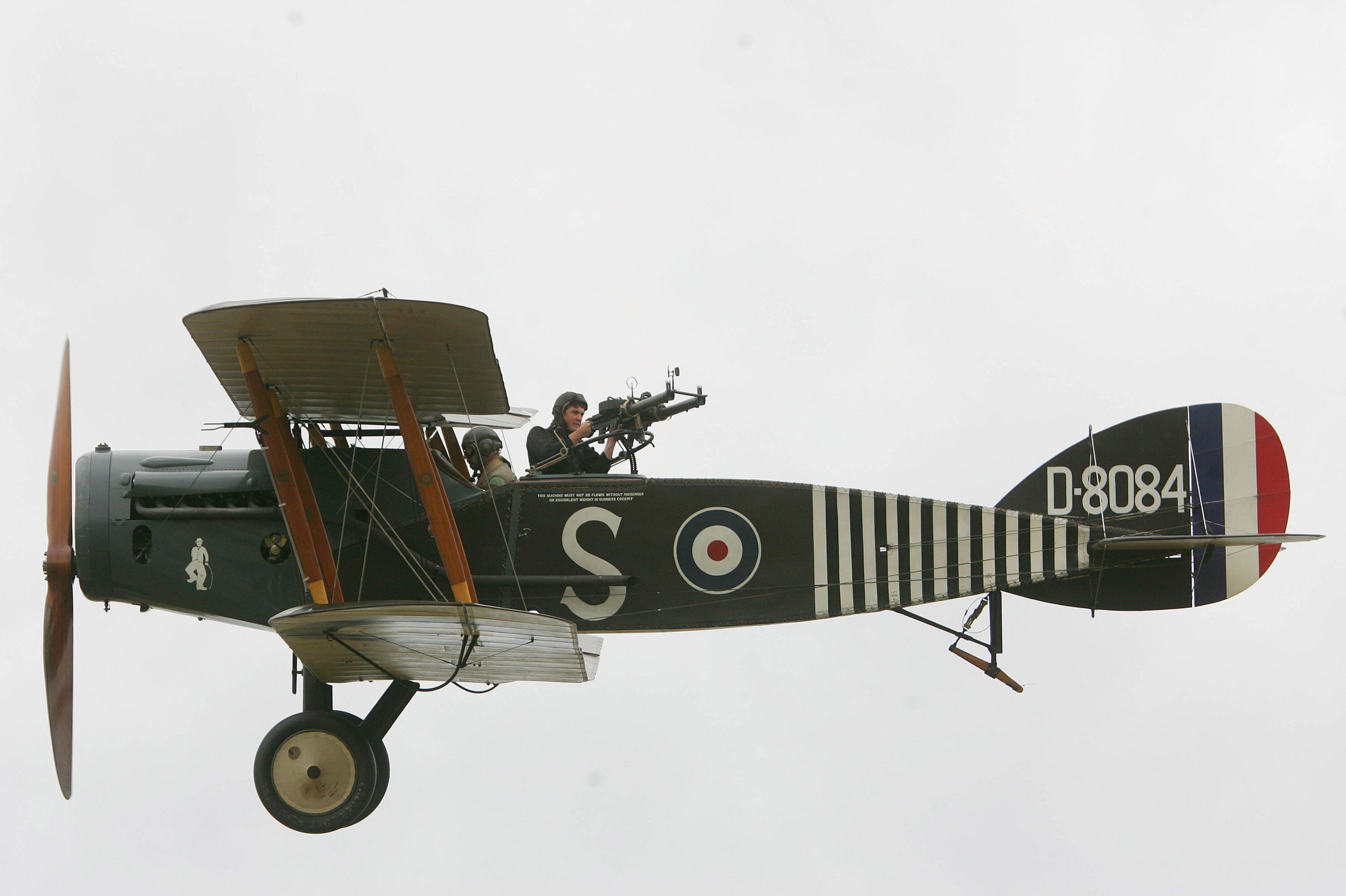
Climbing steadily at 800 feet per minute, Brown settles on a coasting speed of 85 miles per hour as the Bristol bobs gently above the fields of France. All is quiet on the Western Front thousands of feet below. The mission today is reconnaissance: tracking the movement of tanks, the war’s newest terror weapon. The previous week, the German Second Army had briefly occupied the town of Villers Bretonneux as part of its Spring Offensive, piercing the Allied line with its armored A7Vs and sparking the first major tank-on-tank battle in military history.
Brown’s face is a mask of concentration. Behind him, Sainsbury alternates ground observation with nervous glances for enemy planes.
By the spring of 1918, the average life expectancy of a British airman was three weeks. Flying itself was precarious enough. Aerial combat was even deadlier. The German ace of aces, Manfred von Richthofen, better known as “the Red Baron,” had gotten his comeuppance 12 days earlier, shot down over Vaux-sur-Somme, a village three miles to the north.
Brown and Sainsbury are part of No. 48 Squadron, headed by Major Keith Park, a tough New Zealander. Park will go on to become a Knight of the Realm and a key commander in the Battle of Britain during World War II. But none of this is relevant to Brown and Sainsbury today. Counting their blessings, they’re just glad the sharp–shooting New Zealander has lent them his favorite plane. They owe him a rum ration.
Some 60 miles to the northeast, at an airfield just outside Lomme, near the France-Belgium border, Paul Aue, an offizierstelvertreter (officer deputy) in the Imperial German Air Force, tucks in his scarf, pulls down his goggles, and runs an eye over his plane’s instrument panel. The single–seat Pfalz D.IIIa is ready for takeoff. Two wing wardens, one on either side, give him a running start. Once the plane is airborne, Aue feels invigorated and fueled with adrenalin. After being seriously injured in a dogfight above Roulers, Belgium, the previous September, he’s been grounded for eight months. This is his first mission since the layoff, and he’s hungry for a combat victory.
Aue is a German flying ace. Before his injury, he had scored five combat victories, including a British SPAD S.VII downed over Belgium in June 1917. He belongs to Jagdstaffel (Jasta) 10 — a crack German air squadron whose 13 aces are feared for their skill and precision in battle. Today he’s accompanied by five other planes, maintaining a loose formation as they head southwest toward the front. Cruising at the vanguard, Aue looks through the sights of his LMG 08/15 machine gun and weighs his chances. He’s feeling lucky.
RELATED
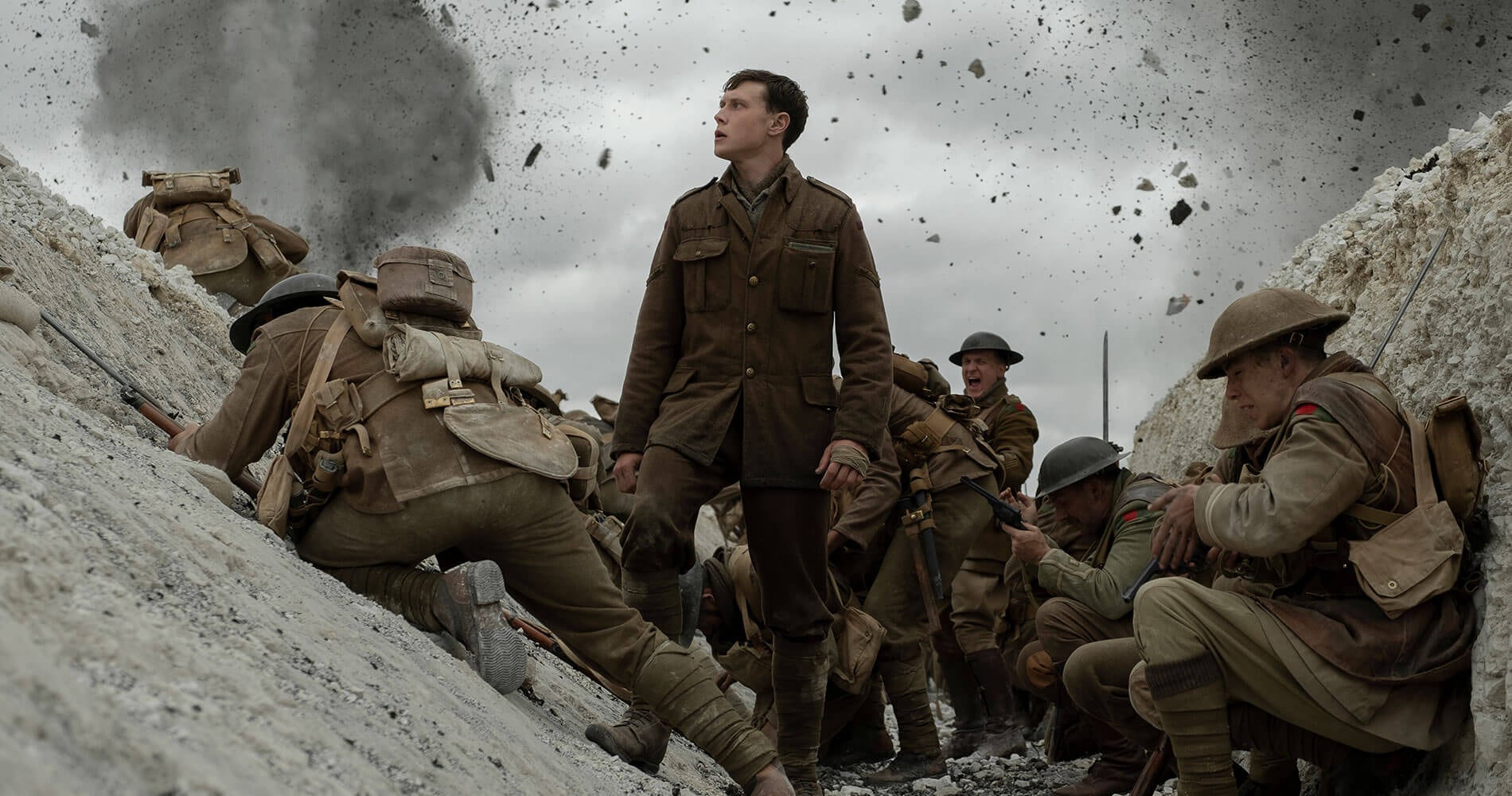
It’s just gone noon and Brown and Sainsbury are circling in their F.2B above the French village of Proyart. Sainsbury, his face tightened in a squint, thinks he may have spotted some tank movements on the ground, when, out of the corner of his eye, he sees something more sinister on the horizon. A swarm of six dots the size of wasps are approaching from the northeast. Amid the roar of the Bristol’s Rolls-Royce V12 engine, he taps Brown on the shoulder and points. The two airmen exchange glances. The whites of Brown’s eyes reveal his fear. One enemy plane is manageable; six seems impossible.
The wasps soon grow to the size of bumblebees and then crows. Sainsbury readies for a dogfight. The plane lurches. He grasps the Lewis gun with both hands and slides it around the ring-mount like a sailor at the wheel of a keeling ship.
Aue smiles to himself. This one is his; the other German planes are just decoys. He steals a glance below and ascertains that he’s still safely over German lines. Bleib zurück! (Stay back!) he yells to no one in particular. Adjusting the controls, he eases the Pfalz up, one hundred, two hundred feet, before going into an exhilarating dive, tailing the F.2B as the panic-stricken British gunner fires his Lewis uselessly into the air. Aue pursues the Bristol mercilessly, pitching left and right, measuring his distance, looking through his telescopic sight. Then he lets loose a salvo.
They’re hit. Smoke is pouring from beneath the cockpit. “Lieutenant! Lieutenant!” Sainsbury is shouting. They’re losing altitude. Brown sits hunched in the cockpit, his face deathly white but rigidly determined. The ground is racing up to meet them. Sainsbury sees a muddy field, heavy artillery, craters, corpses.
He screams, preparing for the impact.
An airplane bursts into flames and the audience lets out an audible gasp. The smell of popcorn wafts over from the row of seats in front as two British soldiers on the big screen rush to the plane and pull out the pilot, barely alive.
It’s January 2020 and I’m sitting in a cinema in Canada with my 14-year-old son watching 1917, the film directed by Sam Mendes. It’s a powerful drama about two British soldiers named Will Scofield and Tom Blake who undertake a dangerous mission during World War I. One of the most defining scenes depicts the shooting down of a German plane in a dogfight. When the aircraft crash lands in a field near an abandoned farmhouse, Scofield and Blake, who are resting after a dangerous dash across no man’s land, run over to help the injured pilot. Their actions have fatal consequences.
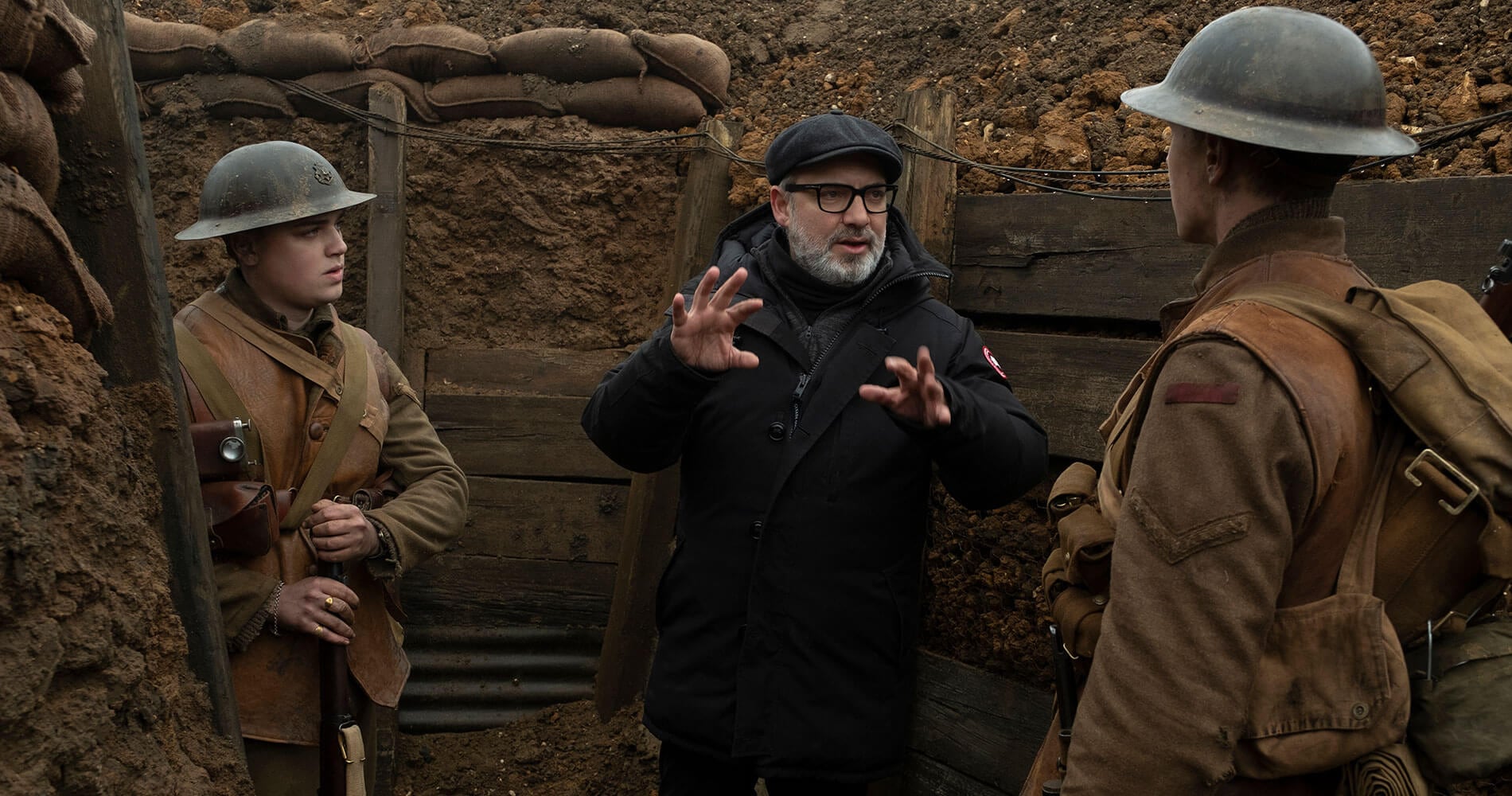
The scene is frightening and graphic in the cinema. As I watch it, I can’t help thinking of my grandfather. Through old family stories, I was aware that he had been involved in a similar plane crash in World War One, but I was ignorant of the details. Was this what it was like for him?
Mendes based the movie on the wartime exploits of his grandfather. In doing so, he set me on a path to find out more about mine.
My grandfather, Arthur William “Bill” Sainsbury, died at age 74 when I was four months old. I grew up with only a vague notion of his wartime exploits. “He didn’t talk about it,” my father would snap wherever I asked about my grandfather’s time in the RAF. “No one did!”
I gave up asking, pushing my grandfather to the back of my mind save for a brief two minutes at church every Remembrance Day. Then came the film and the harrowing airplane scene. Over the following weeks, my curiosity got the better of me. I started to investigate my grandfather’s war record online, surprised at how much I could find out with just a few clicks.
As the weeks progressed, I delved deeper into the story, disappearing for hours into forums and websites containing endless lists of war records. Within a month, I had become an expert on the geography of northeastern France (thank you Google Maps!), the history of the German Spring Offensive, and the forward-firing Vickers machine gun.
Aside from the family connection, what intrigued me most about my World War I education was the bravery of the hopelessly inexperienced airmen, fighting to the death in the crude, rickety aircraft that took them into battle.
Like Mendes, I slowly began to piece together a story, embellishing the facts with elements of fiction to paper over the bits I didn’t know. Much of the information was available in military records, including Brown and Sainsbury’s flight on May 3 from Villers Bretonneux, the details of their Bristol Fighter, and the subsequent attack by Aue’s Pfalz. While I didn’t have a Hollywood budget or an army of military researchers to help me, it became increasingly clear that my grandfather’s mission was no less dangerous or dramatic than the one undertaken by Corporals Will Scofield and Tom Blake in the film.
And it, too, ended tragically.
At 12:15 p.m. on May 3, 1918, Colonel Paul Aue shot down Alexander Brown and Bill Sainsbury in their Bristol F.2B Fighter, serial number C814, over German-occupied Proyart, France. The Bristol had been in the air for 95 minutes. One can only imagine the terror and trauma of the crash landing. Both airmen were listed as missing. Brown died of his injuries three days later.
My grandfather, wounded and presumably pulled from the plane by German soldiers, was subsequently taken prisoner. He was initially transferred three miles southeast to Herleville and then to a POW camp in Guben, Germany, on the border with Poland. He didn’t find out that Brown had died until several weeks later. In Guben, he saw out the final six months of the war amid the deadly Spanish flu pandemic in a camp populated mostly by Russian prisoners. A local newspaper announced his return to England in February 1919, three months after the war ended.
My grandfather came home a changed person. Family testimonies depict him in later life as a detached and introverted man who worked as a postmaster in a small corner shop and rarely left his hometown. It’s an image vastly at odds with the daring airman he must have once been.
I wasn’t able to determine the extent of his wartime injuries, though it’s likely the mental scars lingered longer than the physical ones. At the time of his death in 1966, he was still drawing a military disability pension.
On the other side of the English Channel, Paul Aue finished the war with 10 combat victories to his name. He joined the Luftwaffe in the 1930s as a flying instructor and served on the Eastern Front in World War II. He was captured by the Soviet army in the spring of 1945 and died in a POW camp a couple of weeks before V-E day, at age 53.
Inside the 12th century St. Peter and St. Paul’s Church in the small village of Mottistone on the Isle of Wight in southern England, a memorial on the wall is dedicated to Alexander Claud Garden Brown who “died of wounds received in aerial combat” in Herleville, France, on May 6, 1918. “Though mortally wounded himself,” it says, “he effected a landing, thereby saving the life of his observer.” He was 27 years old.
Brown’s fate sums up the cruel lottery of war—the awful mixture of heroism and tragedy, youthful sacrifice, and survivor’s guilt. Dead before he could have children himself, the brave lieutenant saved my grandfather’s life and, in doing so, guaranteed mine. It would take 20 years and another war for society to fully understand the costly sacrifices made by the courageous airmen of World War I when Winston Churchill, emerging from Keith Park’s 11 RAF Group headquarters on the eve of the Battle of Britain, uttered the immortal words: “Never in the field of human conflict was so much owed by so many to so few.”
Brendan Sainsbury, a freelance travel writer, lives near Vancouver, Canada.
In Other News










